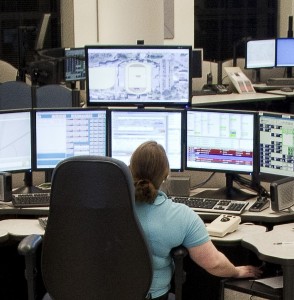Citizens as sensors
Emergency 911 upgrades suggest the possibility
Computer browsers inside the 911 call center for Virginia’s York-Poquoson-Williamsburg region are now equipped to display emergency text messages from Verizon customers. Thankfully, only a few messages have been received so far.
The text-to-911 rollout in York County is just one example of the Federal Communications Commission's push to modernize locally-controlled 911 call centers.
AT&T, Sprint, T-Mobile and Verizon pledged earlier this month to finish the text-messaging upgrades by May 15, 2014, and the FCC has proposed making that date a requirement.
Once the text messaging is ready, the FCC expects pictures and video to follow quickly, which is where the intelligence issues come in:
If every soldier is a sensor, soon every citizen with a smartphone will be a potential sensor too.
The upgrades will be a huge endeavor. The country has approximately 7,600 911 call centers, known officially as public safety answering points. The prospect of upgrading them has sparked a fierce competition between networking specialists Intrado of Longmont, Colo., and TeleCommunication Sytems of Annapolis, Md. Each is vying to work work with the cellular carriers and local authorities. Intrado has projects underway in Iowa, Minnesota, Vermont and Washington.
When the work is done, a wireless phone user who witnesses a terrorist attack or sees something suspicious will have the power to send SMS texts and also Multimedia Messaging Service photos to 911 operators. What happens to the information after that remains unclear.
Because Next Generation 911 is being rolled out primarily to aid first responders and the deaf, little attention has been given to whether or how pictures or video would be fed to the intelligence community. In theory, an intelligence community that's just beginning to comb through Twitter feeds and social media would also have the ability to receive clues directly from citizen witnesses.
That raises lots of questions. When asked if Intrado’s database of texts and images will be compatible with the intelligence community’s networks, Intrado Vice President Michael Lee offered a simple answer: “Unless the military or CIA is using some proprietary format, I don’t think we’ve got a problem with that.”
Terry Hall, chief of emergency communications for the York-Poquoson-Willamsburg region, said any unknowns should be looked at as opportunities.
“What’s great about Next Generation 911 is it’s going to do things that you and I haven’t thought about yet. Just by the nature of it being Internet Protocol, we can do device-to device. We can do [comms from] one [device] to many,” he said.
As for intelligence applications, Hall said the likely route to analysts would be via the Virginia Criminal Information Network and the FBI’s National Crime Information Center.
For now, much of the work has to do with making sure 911 operators and dispatchers have the right policies and training to handle the data feeds.
“When we looked at being an early adopter of this, I had to sit down with my staff and look at pre-launch fears and concerns,” Hall said. “Dispatchers are going to have to learn a new language. Slang and abbreviations. How are they going to multitask between live voice and text calls? How are they going to deal with crank callers? Do they treat text as a live 911 call? Are we going to become overwhelmed and not be able to handle it? How do we handle Freedom of Information Act? Do we give medical instructions?”
Hall said about 95 percent of those issues have been worked out.



